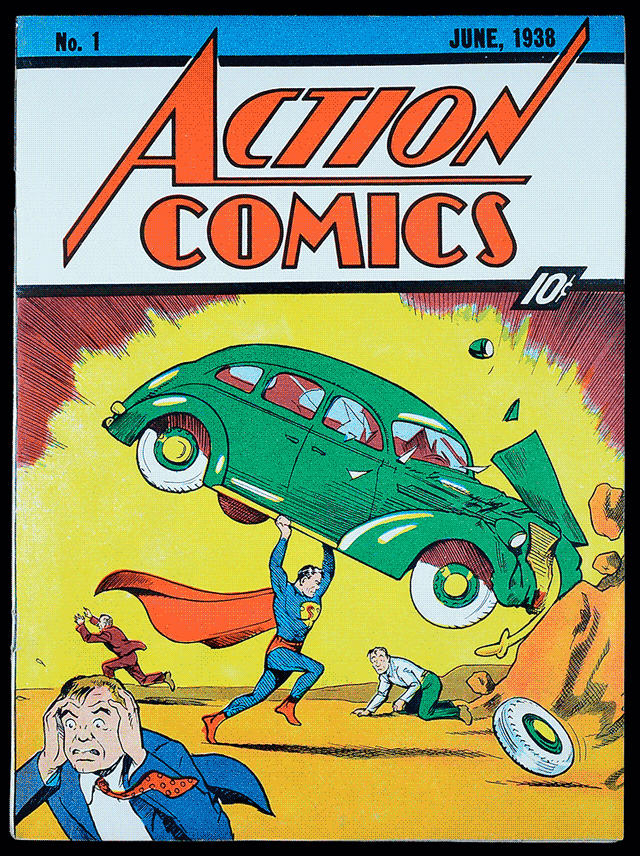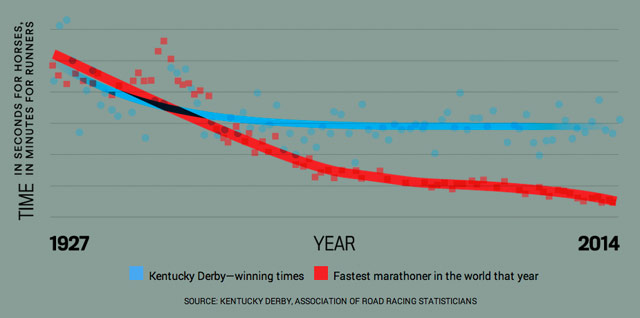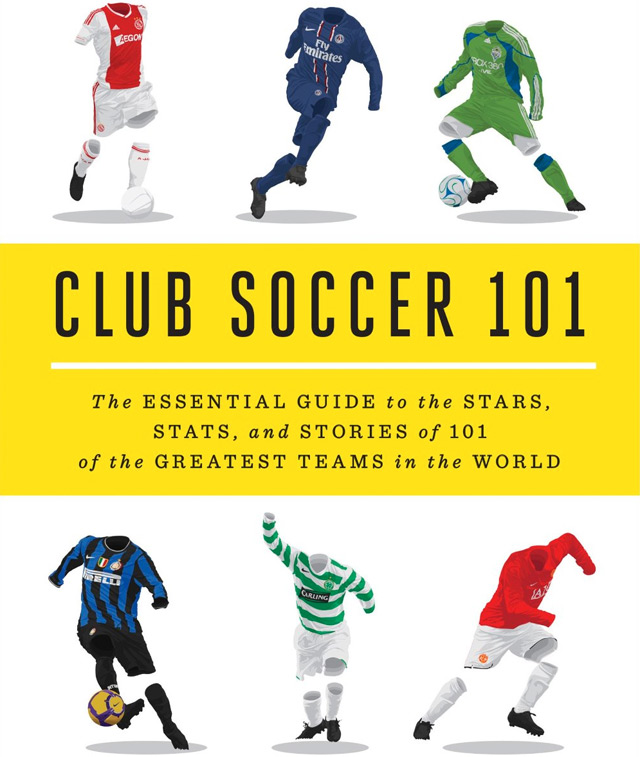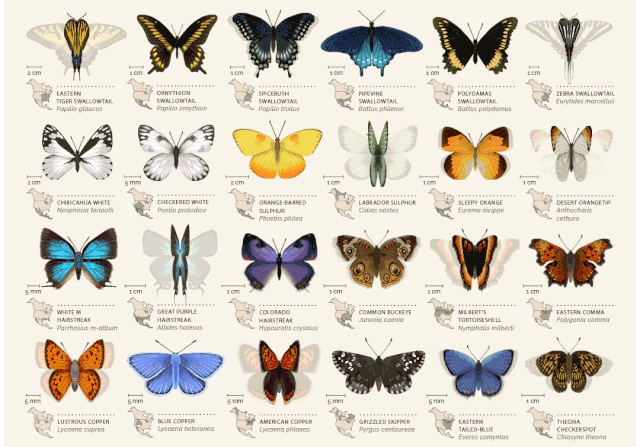Entries for October 2014
From the emergence of markets in the 13th century to the scientific revolution of the 17th century to castles in the 11th century, this is a list of historian Ian Mortimer’s 10 biggest changes of the past 1000 years.
Most people think of castles as representative of conflict. However, they should be seen as bastions of peace as much as war. In 1000 there were very few castles in Europe — and none in England. This absence of local defences meant that lands were relatively easy to conquer — William the Conqueror’s invasion of England was greatly assisted by the lack of castles here. Over the 11th century, all across Europe, lords built defensive structures to defend them and their land. It thus became much harder for kings to simply conquer their neighbours. In this way, lords tightened their grip on their estates, and their masters started to think of themselves as kings of territories, not of tribes. Political leaders were thus bound to defend their borders — and govern everyone within those borders, not just their own people. That’s a pretty enormous change by anyone’s standards.
The list is adapted from Mortimer’s recent book, Centuries of Change.
From the Guardian’s photo editor, an annotated list of the 25 best photographs of Muhammad Ali. My favorite is by Neil Leifer:

(via @DavidGrann)
Been obsessed with Run the Jewels 2 from Killer Mike and El-P this week.
Anil Dash clued me in to Run the Jewels earlier this week on Twitter:
Okay, RTJ2 is incredible. @KillerMikeGTO & @therealelp make it three classic albums in a row. Is anybody else at their level right now?
I’m not qualified to answer that, but this album is very good. Plus! Run the Jewels 2 is available as a free download.
You know what’s pretty? Big waves and surfing in slow motion. Take a break and relax at 1000 fps with this mesmerizing video.
The Hans Zimmer soundtrack only adds to the effect. (via ★interesting)
A new short episode of Every Frame a Painting, in which Tony Zhou talks about how to show character choice in movies without using dialogue. His main example is Snowpiercer. Spoilers ahoy.
Three dancers from The Australian Ballet share their prep routines for their pointe shoes.
Take-aways: Ballerinas’ feet are really not attractive, they soup up their shoes in all sorts of unusual ways, but the end result is beautiful. (thx, fiona)
It can be difficult to understand how large (or small) astronomical objects are, so here are some handy comparisons to things on Earth. Here’s the size of Mars compared to the United States & Canada:

And here’s a neutron star nestled next to Liverpool on the northwest coast of England:

A neutron star also crams in over 1.5 times the mass of the Sun into a tiny ball maybe not much bigger than your daily commute to work, and the Sun is huge (see the size of the Sun later). So this thing is incredibly dense, so dense in fact that just a tea spoon of it would weigh over a billion tonnes, and if you could stand on its surface you’d feel the gravitational pull of 200 billion times that of our planet…not that you’d ever survive it of course.
(via @theclintmcleod)
At this point it’s almost a Pavlovian response; a natural disaster hits and we hit the Red Cross donate button. We feel better, but do the victims benefit? NPR and ProPublica looked at internal emails and confidential reports and uncovered The Red Cross’ Secret Disaster.
During Isaac, Red Cross supervisors ordered dozens of trucks usually deployed to deliver aid to be driven around nearly empty instead, ‘just to be seen’ … During Sandy, emergency vehicles were taken away from relief work and assigned to serve as backdrops for press conferences, angering disaster responders on the ground.
The directorial debut of Alex Garland, screenwriter of Sunshine and 28 Days Later, looks interesting.
Ex Machina is an intense psychological thriller, played out in a love triangle between two men and a beautiful robot girl. It explores big ideas about the nature of consciousness, emotion, sexuality, truth and lies.
(via http://devour.com/)
In an article for Businessweek, Apple CEO Tim Cook publicly reveals he is gay.
At the same time, I believe deeply in the words of Dr. Martin Luther King, who said: “Life’s most persistent and urgent question is, ‘What are you doing for others?’ ” I often challenge myself with that question, and I’ve come to realize that my desire for personal privacy has been holding me back from doing something more important. That’s what has led me to today.
For years, I’ve been open with many people about my sexual orientation. Plenty of colleagues at Apple know I’m gay, and it doesn’t seem to make a difference in the way they treat me. Of course, I’ve had the good fortune to work at a company that loves creativity and innovation and knows it can only flourish when you embrace people’s differences. Not everyone is so lucky.
While I have never denied my sexuality, I haven’t publicly acknowledged it either, until now. So let me be clear: I’m proud to be gay, and I consider being gay among the greatest gifts God has given me.
We the Economy is a series of 20 short videos that attempt to explain important economic concepts. For instance, acclaimed director Ramin Bahrani did a video about regulatory capture starring Werner Herzog, Patton Oswalt, and the Sherman Antitrust Act of 1890.
Anchorman director Adam McKay directed an animated My Little Pony-esque video about wealth distribution and income inequality featuring the voice talents of Amy Poehler, Maya Rudolph, and Sarah Silverman.
Paul Allen and Morgan Spurlock are behind the effort, with Bob Balaban, Steve James, Catherine Hardwicke, and Mary Harron directing some of the other videos. (via mr)

Canadian astronaut Chris Hadfield became a celebrity while aboard the International Space Station. Now he’s publishing a book of photographs he took during his time in orbit: You Are Here: Around the World in 92 Minutes.
During 2,597 orbits of our planet, I took about 45,000 photographs. At first, my approach was scattershot: just take as many pictures as possible. As time went on, though, I began to think of myself as a hunter, silently stalking certain shots. Some eluded me: Brasilia, the capital of Brazil, and Uluru, or Ayers Rock, in Australia. I captured others only after methodical planning: “Today, the skies are supposed to be clear in Jeddah and we’ll be passing nearby in the late afternoon, so the angle of the sun will be good. I need to get a long lens and be waiting at the window, looking in the right direction, at 4:02 because I’ll have less than a minute to get the shot.” Traveling at 17,500 miles per hour, the margin for error is very slim. Miss your opportunity and it may not arise again for another six weeks, depending on the ISS’s orbital path and conditions on the ground.
In an interview with Quartz, Hadfield says the proceeds from the book are being donated to the Red Cross.
A woman recently took to the streets of NYC and walked around for 10 hours. She walked behind someone wearing a hidden camera that captured all of the catcalls and harassment directed toward her during that time…108 incidents in all. This is what it’s like being a woman in public:
At The Awl, John Herrman notes the parallels between a woman on the streets of NYC and a woman spending time on the internet.
But the video works in two ways: It’s also a neat portrayal of what it is like to be a woman talking about gender on the mainstream internet. This became apparent within minutes of publication, at which point the video’s comment section was flooded with furious responses.
A typical post in the YouTube comments thread:
are you fucking kidding me “verbal harassment”? most of all the guys called that woman “beautiful” or said to “have a good day”….it would be harassment if the guys called that woman a “hoe” or “bitch”…you are a fucktard.
On Tumblr, Alex Alvarez neatly dispenses with that sort of “logic”:
To anchor this more concretely, consider the behavior of the men in the video. Take a look at how they seek the woman out to wish her a good morning, despite her not having made eye contact or shown any interest in talking to them. Take a look at how they’re not wishing a good morning to any other person, particularly male people, also walking around. The woman is walking directly behind the man filming her (the camera is hidden in his backpack), and not one of the men shown in the video are seen to be greeting him and wishing him a good day. Just her.
Why is this?
It’s because they don’t care, really whether she has a good day or not. What they care about is letting her know that they have noticed her — her hair, her face, her body, her outfit. They want her to notice that they’ve noticed, and they want her to notice them, however fleetingly.
In this music video for Roy Kafri, a bunch of iconic album covers come alive and start singing.
Among them, The Smiths, Madonna, David Bowie, and Michael Jackson. (via colossal)
In a rare bit of good news about climate change, it appears that some types of coral have the ability to recover more quickly from trauma caused by rising ocean temperatures (archive).
At Palau in the western Pacific, a survey completed just three years after the 1998 bleaching event showed more coral had recovered on reefs within protected bays and on deep slopes.
Scientists suggest this is because heat and light serve as a double-whammy to coral health and corals that hang out in shady zones will escape the scorching combination, upping the chances that remnants will survive.
Seven years after the bleaching event, some reefs had regained nearly 40 per cent of their corals, with two species of plate-like acroporid coral, A. digitifera and A. hyacinthus, particularly prevalent. “We sampled plating coral colonies there a few years ago and found them to be pool-table size,” says Stephen Palumbi, Director of Stanford University’s Hopkins Marine Station, in Pacific Grove, California, US.

Wells Tower recently profiled master counterfeiter Frank Bourassa for GQ. Bourassa made $200 million in nearly flawless fake US twenties in a barn in Canada, got caught, and, you get the feeling pretty early on in the piece, didn’t really do any time for the crime.
Drawing on cautionary news reports of failed counterfeiters, Frank sketched out a set of best-practice guidelines for his new concern. First, “don’t ever try to pass the money yourself. You want to be as far away as possible from where the money’s being spent.” Second, “don’t sell your stuff to anyone who’s going to be passing it locally. I knew from the beginning, I needed to sell my bills to Europe or Asia.” Third, resist the temptation to print big bills. “Do twenties. It’s stupid to try to pass hundred-dollar bills anymore. People look at them all day long, hold it up to the light and everything. Nobody looks twice at a twenty.” Fourth, don’t cheap out. Most of the people who try their luck at counterfeiting do so by breathtakingly broke-dick means, with stuff you can buy at Office Depot.
“Can you make bills on a $50 ink-jet? Sure, if you want to get busted right away,” said Frank. “All the security features in a bill are basically there to stop broke fucking-moron assholes who are trying to do their thing on an ink-jet. I knew if I wanted to succeed, my bills had to be as perfect as possible, as close as possible to the way the bills are actually made.”
Don’t miss the video of Bourassa examining one of the new $US100 bills. He doesn’t really come off as someone organized enough to pull something like this off, which was probably advantageous to him in actually (almost) doing so. There’s much more information about Bourassa on his web site.

Today’s Google Doodle honors Jonas Salk on what would have been his 100th birthday. Salk developed the first successful polio vaccine in 1955 and was hailed as a hero for it.
On April 12, 1955, Dr. Thomas Francis, Jr., of the University of Michigan, the monitor of the test results, “declared the vaccine to be safe and effective.” The announcement was made at the University of Michigan, exactly 10 years to the day after the death of President Roosevelt. Five hundred people, including 150 press, radio, and television reporters, filled the room; 16 television and newsreel cameras stood on a long platform at the back; and 54,000 physicians, sitting in movie theaters across the country, watched the broadcast on closed-circuit television. Eli Lilly and Company paid $250,000 to broadcast the event. Americans turned on their radios to hear the details, department stores set up loudspeakers, and judges suspended trials so that everyone in the courtroom could hear. Europeans listened on the Voice of America. Paul Offit writes about the event:
“The presentation was numbing, but the results were clear: the vaccine worked. Inside the auditorium Americans tearfully and joyfully embraced the results. By the time Thomas Francis stepped down from the podium, church bells were ringing across the country, factories were observing moments of silence, synagogues and churches were holding prayer meetings, and parents and teachers were weeping. One shopkeeper painted a sign on his window: Thank you, Dr. Salk. ‘It was as if a war had ended’, one observer recalled.”
Because of Salk’s vaccine and subsequent vaccines, the US has been polio-free since 1979.
An Antares rocket on its way to the International Space Station is taking off from a launch pad in Virginia tonight at 6:45 ET and the launch should be visible from South Carolina to central Massachusetts. Here’s where you should be able to see the launch, if your skies are clear:

Cool!
Update: The launch has been scrubbed for today…some idiot boat was in the “hazard area”. Same time tomorrow? (Smaller update: Not quite…launch is scheduled for 6:19 ET tomorrow.)
The NY Times interviewed several people in their 80s who are still killing it in their careers and creative pursuits. Says Ruth Bader Ginsberg about surprises about turning 80:
Nothing surprised me. But I’ve learned two things. One is to seek ever more the joys of being alive, because who knows how much longer I will be living? At my age, one must take things day by day. I have been asked again and again, “How long are you going to stay there?” I make that decision year by year. The minute I sense I am beginning to slip, I will go. There’s a sense that time is precious and you should enjoy and thrive in what you’re doing to the hilt. I appreciate that I have had as long as I have… It’s a sense reminiscent of the poem “Gather ye rosebuds while ye may.” I had some trying times when my husband died. We’d been married for 56 years and knew each other for 60. Now, four years later, I’m doing what I think he would have wanted me to do.
The interviews are accompanied by an essay by Lewis Lapham, himself on the cusp of 80.
John D. Rockefeller in his 80s was known to his business associates as a crazy old man possessed by the stubborn and ferocious will to know why the world wags and what wags it, less interested in money than in the solving of a problem in geography or corporate combination. By sources reliably informed I’m told that Warren Buffett, 84, and Rupert Murdoch, 83, never quit asking questions.
I read a book several years ago which is relevant here called Old Masters and Young Geniuses, in which economist David Galenson divided creative people into two main camps: conceptual and experimental innovators:
1) The conceptual innovators who peak creatively early in life. They have firm ideas about what they want to accomplish and then do so, with certainty. Pablo Picasso is the archetype here; others include T.S. Eliot, F. Scott Fitzgerald, and Orson Wells. Picasso said, “I don’t seek, I find.”
2) The experimental innovators who peak later in life. They create through the painstaking process of doing, making incremental improvements to their art until they’re capable of real masterpiece. Cezanne is Galenson’s main example of an experimental innovator; others include Frank Lloyd Wright, Mark Twain, and Jackson Pollock. Cezanne remarked, “I seek in painting.”
When the new Airbnb logo was introduced, the company caught a lot of flack from the internet because the logo resembled an odd combination of almost every sexual body part. I actually liked the logo right away and after a few months with it, the juvenile connotations have faded.
But you know what makes Airbnb’s logo really really really look like a cartoonish vagina butt? Putting arms and legs and hats on the logo and animating it.

Airbnb is sponsoring the NYC Marathon this year, and the logo characters were created for the event. Maaaaybe they’d like to rethink this?

What if Windows 95 had come out in 1993? I guess? I have no idea what this is1, but it’s fun to play around with. If this doesn’t make you nostalgic, congratulations, you’re young as fuck!
NASA has a new Soundcloud account with playlists like Rocket Engine Sounds, Solar System & Beyond Sounds, and Space Shuttle Mission Sounds. Here is the infamous Sputnik beep:
“Ok Houston, we’ve had a problem here”:
And “one small step”:
(via @brillhart)
Earlier today, with zero fanfare from an energy drink company, 57-year-old Alan Eustace broke Felix Baumgartner’s 2-year-old record for the highest free-fall parachute jump.
Mr. Eustace’s maximum altitude was initially reported as 135,908 feet. Based on information from two data loggers, the final number being submitted to the World Air Sports Federation is 135,890 feet.
The previous altitude record was set by Austrian daredevil Felix Baumgartner, who jumped from 128,100 feet on Oct. 14, 2012.
Mr. Eustace was carried aloft without the aid of the sophisticated capsule used by Mr. Baumgartner or millions of dollars in sponsorship money. Instead, Mr. Eustace planned his jump in secrecy, working for almost three years with a small group of technologists skilled in spacesuit design, life-support systems, and parachute and balloon technology.
He carried modest GoPro cameras aloft, connected to his ground-control center by an off-the-shelf radio.
Flash? Meet substance.
Given what we know now about how anthropogenic climate change is contributing to rising sea levels, Miami will be one of the first major American cities to find itself completely under water in the next century.

That inevitability is fueling a fledgling secessionist movement. And it’s not some crackpot grassroots effort either…the mayor and city commission of South Miami passed a resolution earlier this month that South Florida should break away and form the nation’s 51st state.
Whereas, South Florida’s situation is very precarious and in need of immediate attention. Many of the issues facing South Florida are not political, but are now very significant safety issues; and
Whereas, presently, in order to address the concerns of South Florida, it is necessary to travel to Tallahassee in North Florida. Often South Florida issues do not receive the support of Tallahassee. This is despite the fact that South Florida generates more than 69 percent of the state’s revenue and contains 67 percent of the state’s population; and
Whereas, the creation of the 51st state, South Florida, is a necessity for the very survival of the entire southern region of the current state of Florida.
Look for more of this type of thing in the years to come. The fight over fossil fuels has already shaped a great deal of the modern global political structure and the coming shifts in climate will almost certainly do the same.
From her recent memoir, Sheila E. recounts the first time she met Prince.
I never did make it down to the studio to meet “the kid,” but a few months later, in April 1978, I was at Leopold’s record store in Berkeley browsing through records when I looked up to see a new poster. It featured a beautiful young man with brown skin, a perfect Afro, and stunning green eyes. The word Prince was written in bold letters at the top. That was the guy Tom was talking about!
I found his album For You in the rack and immediately looked at the credits: “Produced, arranged, composed, and performed by Prince.”
The staff at the store, whom I’d known for years, let me take the poster home. Before I’d even listened to his record, I’d taped the poster above my waterbed. Then I lowered the needle onto the album on my record player, sat on the floor, and listened to it in its entirety. Tom was right. I immediately heard that funky rhythm guitar part he’d been talking about. It wasn’t only on one song, but the whole album. I stared up at the poster and told him, “I’m gonna meet you one day.”
(via @anildash, probably)

This happened a few days ago, but I just got a chance to check it out: FXX launched Simpsons World, a site where you can stream every Simpsons episode ever aired. You just need a cable login, as with HBO GO. There are apps too: iOS and Android. To get you started, here are the top 10 episodes of all time, from a 2003 Entertainment Weekly list.
1. Last Exit to Springfield
2. Rosebud
3. Cape Feare
4. Marge vs. the Monorail
5. Homer’s Phobia
6. Mr. Plow
7. Itchy & Scratchy Land
8. A Fish Called Selma
9. Treehouse of Horror V
10. The Last Temptation of Homer
Update: Got a bunch of complaints that the “free” in the title is misleading because a cable subscription is required, even though I explicitly called that out in the second sentence. Fair enough. But then again, if you’re going to nitpick, nothing is free. Even if you didn’t need a cable login, Simpsons World would hardly be free. You need access to an expensive computer or mobile device, high-speed internet access, and enough free (there’s that word again!) time to watch. And even if you’re viewing using a computer at the public library, you’re paying with your attention by watching advertising.
But all that is red herring nonsense. I was using “free” in the sense that for cable subscribers, they’re getting something they did not have for the same price they were previously paying. You know, free.
An endling is an individual that’s the last of its species. This is Martha, the world’s last passenger pigeon, who died in the Cincinnati Zoo in 1914.

Mat Kirkby’s short film, The Phone Call, won the Best Narrative Short prize at the Tribeca Film Festival and is rumored to be in the running for an Oscar nomination. It features a young woman who works in helpline call office (Oscar nominee Sally Hawkins) taking a call from a distraught man (Oscar winner Jim Broadbent). (via slate)
Update: The video has been taken down from Vimeo, so I’ve removed the embed. I think it was something about film festival eligibility?
Update: The Phone Call did end up being nominated for an Oscar; here’s Kirkby and friends reacting to the nomination.
You don’t know what you would do unless you’re in that situation.
That’s Philip Zimbardo’s1 introduction to this fascinating and deeply disturbing video, depicting a real-world instance of Stanley Milgram’s experiment on obedience to authority figures2. In the video, you see a McDonald’s manager take a phone call from a man pretending to be a police officer. The caller orders the manager to strip search an employee. And then much much worse.
The video is NSFW and if you’re sensitive to descriptions and depictions of sexual abuse, you may want to skip it. And lest you think this was an isolated incident featuring exceptionally weak-minded people, the same caller was alleged to have made several other calls resulting in similar behavior. (via mr)
Actress Tippi Hedren and her family (including her then-teenage daughter Melanie Griffith) lived with a pet lion named Neil for a while back in the 1970s. Here’s Neil and Melanie catching a few winks together:


From Grantland’s 30 for 30 Shorts series, a short film on former major league catcher Mackey Sasser and how he lost the ability to throw the ball back to the pitcher.
[I took the video out because someone at ESPN/Grantland is idiot enough to think that, by default, videos embedded on 3rd-party sites should autoplay. Really? REALLY!? Go here to watch instead.]
I remember Sasser (I had his rookie card) but had kinda stopped paying attention to baseball by the time his throwing problem started; I had no idea it was so bad. The video of him trying to throw is painful to watch. According to the therapists we see working with Sasser in the video, unresolved mental trauma (say, from childhood) builds up and leaves the person unable to resolve something as seemingly trivial as a small problem throwing a ball back to the pitcher. I’ve read and written a lot about this sort of thing over the years.
Christine Muhlke talks to several different chefs and writers about how they approach writing recipes.
The goal should be that the reader can make the recipe his or her own — that the instructions are clear and good enough that after a few tries, he or she can improvise to please themselves. The chef gives ideas so that the cook can profit. It’s not dictation; it’s inspiration.
When’s the last time I let you down? Ok, maybe don’t answer that. But, when I tell you that a short film about the hand gestures used by a quarry boss guiding massive excavators harvesting marble is well worth watching, you’re gonna go ahead and watch it, right? Because this is a beautiful little film.
I was so taken by the chief, watching him work. How he can move gigantic marble blocks using enormous excavators, but his own movements are light, precise and determined.
Notice the tips of two fingers are missing. That’s how you get to be the boss. More hand gestures: hand signals used by traders on the floor of the NY Mercantile Exchange, nightclub hand signals, hand signals at Eleven Madison Park, and church usher hand signals. (via digg)

As Ebola enters a deepening relationship with the human species, the question of how it is mutating has significance for every person on earth.
From the front lines in West Africa to the genomics researchers who hope to control the outbreak, The New Yorker’s Richard Preston provides a detailed and interesting look at The Ebola Wars. Preston is the author of 1995’s The Hot Zone, the bestselling account of the first emergence of Ebola, which is back in the top 50 on Amazon.

A single nearly flawless copy of Action Comics #1 recently sold on eBay for just over $3.2 million. Produced in 1938, the comic marked the first appearance of Superman and is considered the genesis of the superhero genre of comics (although there is some debate about that). This video shows what great condition this comic is in:
I’ve bought new comics that didn’t look that good. Here’s why:
The reason it was in such impeccable condition was that the while the first owner bought it for 10 cents from the newsstand in 1938 like 200,000 other people did, unlike most everyone else he lived at fairly high altitude in the Blue Ridge Mountains of West Virginia and when he finished reading it, he put the comic in a cedar chest where it remained virtually untouched for four decades. The cool, dark, dry environment of the cedar chest froze time for this comic.
You can flip through the entire comic yourself right here.
With A Little Help From My Fwends is The Flaming Lips full-length cover of The Beatles’ Sgt. Pepper’s Lonely Hearts Club Band. NPR has a first listen to it. ft. Foxygen, Miley Cyrus, Moby, Tegan And Sara, and others.
Last year’s pulverizing and strangely pretty The Terror was often punishingly uncompromising, but With A Little Help From My Fwends tackles its impossible task with a comparatively light touch. That lightness is clear from the title alone, and yet The Flaming Lips’ audaciously playful streak (required in order to cover Sgt. Pepper’s in the first place) still gets undercut with moments of abrasiveness, aggression and detours down strange side roads.
This is the most delightful restaurant review I’ve read in quite awhile. In it, Jay Rayner disembowels the “hilariously silly” London restaurant Beast and its presumed clientele, “men with teeny-weeny penises”. I have no idea how to pick just one of the great passages from this review so I’ll do two:
“I’m sorry sir, we don’t serve bread.” Eh? What’s all that about? I could see this as some stand for a bang-on-trend, carb-free Palaeolithic diet, were it not for the fact they serve chips. Mind you, they’re crap chips, huge fat things that could exclude drafts. Who actually likes their chips this way? They’re advertised as coming with truffle and foie-gras salt, which is like getting a gold-plated, diamond-encrusted case for your smartphone because you’ve run out of things to spend money on. It’s a spoilt person’s version of luxury; the pillowy “chips” do not taste either of goose liver or truffle.
And:
The corn-fed, dry-aged Nebraskan rib-eye, with a carbon footprint big enough to make a climate-change denier horny, is bloody marvellous: rich, deep, earthy, with that dense tang that comes with proper hanging. And at £100 a kilo it bloody well should be. At that price they should lead the damn animal into the restaurant and install it under the table so it can pleasure me while I eat.
Reminiscent of Pete Wells’ review of Guy Fieri’s place in Times Square. Some restaurants become immortal and immune to criticism but I don’t think Beast and Guy Fieri’s are quite there yet.
Watch as Stig Severinsen, aka The Man Who Doesn’t Breathe, swims underwater amongst icebergs. Beautiful.
Severinsen is currently the world’s record holder for the longest time holding a breath at 22 minutes. 22! I barely breathed myself while watching this video of his record breaking attempt. (via devour)
With the BBC’s new online feature, Your Life on Earth, you plug in when you were born and it spits out all sorts of facts about how the world has changed since you were born. Here are some of mine:
Population has increased by 3,324,602,171 since you were born (currently 7.24 billion)
A coast redwood’s growth in your lifetime: 52’10”
Travelled 24.1 billion miles around the Sun
Global life expectancy has increased by 10.1 years since you were born
I am 170 years old on Mercury
Very quickly, here’s how a computer works at the simplest level.

Want to see how computers store data? This next device is called a ‘D-Latch’. It holds a binary bit. The top switch is the value to be stored, the bottom switch enables storage. Eight of these devices can be used to store a byte in memory.

From A Continuous Lean, a review of some of NYC’s most beloved bygone music venues, including The Cotton Club (closed 1940), The Gaslight Cafe (closed 1971), and CBGB (closed 2006).
Despite being located in Harlem, and showcasing many black performers, The Cotton Club actually had a strict “whites only” policy.
If you want to watch a bunch of realistic-looking fake people run into a slowly spinning metal bar (and you really should want to watch it), this is the video for you:
It’s better bigger or with sound. (via waxy)
From Silence of the Lambs (#1) to To Kill A Mocking Bird (#9) to Blade Runner (#28), these are the 50 best book-to-movie adaptations ever, compiled by Total Film.
Somehow absent is Spike Jonze’s Adaptation and I guess 2001 was not technically based on a book, but whatevs. The commenters additionally lament the lack of Requiem for a Dream, Gone with the Wind, The French Connection, Rosemary’s Baby, Last of the Mohicans, and The Wizard of Oz.
For the first episode of podcast called Working, David Plotz talks to Stephen Colbert about how he and his staff construct The Colbert Report. This is fascinating.
My show is a shadow of the news, so I have to know what shadow it’s casting right now, so I can distort it in my own way.
At the 13 minute mark, he talks about how the team communicates with each other about how the show is shaping up, changes, concerns, etc. They do it all by what sounds like text messaging. Paging Stewart Butterfield, you should get those folks on Slack. (via digg)

From Michael Benson comes Cosmigraphics, a survey of many ways in which humans have represented the Universe, from antiquity on up to the present day.
Selecting artful and profound illustrations and maps, many hidden away in the world’s great science libraries and virtually unknown today, he chronicles more than 1,000 years of humanity’s ever-expanding understanding of the size and shape of space itself. He shows how the invention of the telescope inspired visions of unimaginably distant places and explains why today we turn to supercomputer simulations to reveal deeper truths about space-time.
The NY Times has an adaptation of the introduction to the book.
Among the narrative threads woven into the book are the 18th-century visual meditations on the possible design of the Milky Way - including the astonishing work of the undeservedly obscure English astronomer Thomas Wright, who in 1750 reasoned his way to (and illustrated) the flattened-disk form of our galaxy. In a book stuffed with exquisite mezzotint plates, Wright also conceived of another revolutionary concept: a multigalaxy cosmos. All of this a quarter-century before the American Revolution, at a time when the Milky Way was thought to constitute the entirety of the universe.
Last week, Emily Dreyfuss wrote a piece at about Why I’m Giving Wikipedia 6 Bucks a Month.
“Give me money, Emily,” Wales begged, “then go back to researching Beyonce lyrics.”
“Excuse me, Jimmy,” I wanted to say, “I don’t appreciate being watched as I read about how her song “Baby Boy” includes a lyrical interpolation of “No Fear” by O.G.C.”
Later, Wikipedia replaced Wales with other employees of the Wikimedia Foundation, which maintains Wikipedia with grants and donations. They moved me about as much as Wales did, which is to say not at all.
Today, while scanning my third Wikipedia article in as many hours, I saw the beggi…. er, note was back. It’s at the bottom now, without the pleading visage of a Wikipedian, and now includes an option to pay monthly.
I was annoyed, again. That’s the first instinct of anyone who spends time on the Internet and is constantly bombarded by pleas for money. But then I realized something: My annoyance was a symptom of my dependence on Wikipedia. I rely on it utterly. I take it completely for granted.
I found her argument persuasive, so much so that I just signed up to give Wikipedia a monthly amount as well. I consider it a subscription fee to an indispensable and irreplaceable resource I use dozens of times weekly while producing kottke.org. It’s a business expense, just like paying for server hosting, internet access, etc. — the decision to pay became a no-brainer for me when I thought of it that way.
Do other media companies subscribe to Wikipedia in the same fashion? How about it Gawker, NY Times, Vox, Wired, ESPN, WSJ, New York Magazine, Vice, Washington Post, The Atlantic, Buzzfeed, Huffington Post? Even $500/month is a drop in the bucket compared to your monthly animated GIF hosting bill and I know your writers use Wikipedia as much as I do. Come on, grab that company credit card and subscribe.

Like it says on the tin: a collection of Beautiful Maps. I wish there was some attribution attached to each map though. The map above is by Claude Bernou circa 1681. (via @khoi)
Rex Sorgatz wonders what sort of robots we’ll build, R2-D2s or C-3POs.
R2-D2 excels in areas where humans are deficient: deep computation, endurance in extreme conditions, and selfless consciousness. R2-D2 is a computer that compensates for human deficiencies — it shines where humans fail.
C3-PO is the personification of the selfish human — cloying, rules-bound, and despotic. (Don’t forget, C3-PO let Ewoks worship him!) C3-PO is a factotum for human vanity — it engenders the worst human characteristics.
I love the chart he did for the piece, characterizing 3PO’s D&D alignment as lawful evil and his politics as Randian.
Tony Zhou’s excellent series on filmmaking, Every Frame a Painting, has become a much-watch for me. Here’s the latest one, a short look at a single scene from Silence of the Lambs in which Zhou asks: Who Wins the Scene?
Lockheed Martin is in the process of developing a compact fusion reactor they say could revolutionize the world’s energy industry.
Dubbed the compact fusion reactor (CFR), the device is conceptually safer, cleaner and more powerful than much larger, current nuclear systems that rely on fission, the process of splitting atoms to release energy. Crucially, by being “compact,” Lockheed believes its scalable concept will also be small and practical enough for applications ranging from interplanetary spacecraft and commercial ships to city power stations. It may even revive the concept of large, nuclear-powered aircraft that virtually never require refueling-ideas of which were largely abandoned more than 50 years ago because of the dangers and complexities involved with nuclear fission reactors.
The key difference in Lockheed’s approach seems to be the configuration of the magnetic field containing the reaction:
The CFR will avoid these issues by tackling plasma confinement in a radically different way. Instead of constraining the plasma within tubular rings, a series of superconducting coils will generate a new magnetic-field geometry in which the plasma is held within the broader confines of the entire reaction chamber. Superconducting magnets within the coils will generate a magnetic field around the outer border of the chamber. “So for us, instead of a bike tire expanding into air, we have something more like a tube that expands into an ever-stronger wall,” McGuire says. The system is therefore regulated by a self-tuning feedback mechanism, whereby the farther out the plasma goes, the stronger the magnetic field pushes back to contain it. The CFR is expected to have a beta limit ratio of one. “We should be able to go to 100% or beyond,” he adds.
Charles Seife, who wrote a book about the history of fusion, is skeptical of Lockheed’s claims.
This week, Lockheed Martin supposedly managed to achieve a “breakthrough” in nuclear fusion that has gotten a lot of media attention. As Charles Seife points out, it did so “without having built a prototype device that, you know, fuses things on an appreciable scale. It’s a stunning assertion, even by fusion-research standards. But a quick look at the defense contractor’s ambitious plan-a working reactor in five years-already shows the dream fraying around the edges. A year and a half ago, the company promised that fusion was four years away, meaning that the schedule is already slipping. Negative one years of progress in 20 months is, sadly, business as usual for fusion. At this rate, it’ll take Lockheed Martin at least a decade before the natural endpoint: desperately spinning victory out of an underwhelming result generated by a machine whose performance comes nowhere near predictions-and which brings us no closer to actually generating energy from a fusion reaction.”
After playing four straight days of Beyonce tunes, a Houston news radio station settled on its new format: classic hip hop. It’s the first major market radio station to do so.
In many ways, this is an idea whose time has come, which is another way of saying that hip-hop, and its first-wave fans, are, well, old. Dre will be 50 in February; Ice-T is just 10 years away from his first Social Security check. Licensed to Ill topped the Billboard charts in 1987; three years later, hip-hop made up one-third of the Hot 100. By 1999, it was the country’s best-selling genre, with more than 81 million albums sold. The fans who propelled the early boom probably don’t know Young Thug from Rich Homie Quan, and don’t want to.
The obvious parallel is to classic rock radio — a format that emerged in the early-1980s as baby boomers rejected punk and disco, and radio execs realized it was easier to serve up old songs than convince their aging audiences to try new music. It eventually morphed into a touchstone of middle-age: Every so often, a cultural observer wakes up, checks his bald spot and wonders how Green Day or Smashing Pumpkins or some other band of his own youth got lumped in with Led Zeppelin and Aerosmith on the radio dial.
Not this cultural observer! I’ve never done anything of that sort ever.
Annnnyway, here’s a Spotify playlist (Rdio) of the sort of thing Boom 92 will be playing. (via @tcarmody)
John Overholt, a curator of early modern books and manuscripts at Harvard’s Houghton Library, has started a new blog called First Drafts of History that features the first versions of Wikipedia articles. Here’s the first draft of the iPhone entry, dated more than a year and a half before it was introduced.

I’m sure there were many giggles about this kind of thing in the Britannica offices back then. Wikipedia has come a long way.

From Tobias Frere-Jones, a short history of how typefaces get their names.
Years ago, I asked one of my mentors what he thought was the hardest part of designing a typeface. I was expecting “the cap S” or “the italic lowercase” or something like that. But he answered without hesitation: the name. Finding the name is the hardest part.
Speaking of PBS shows, Steven Johnson’s How We Got to Now starts on PBS tonight with two back-to-back episodes. The NY Times has a positive review.
The opening episode, for instance, is called “Clean,” and it sets the pattern for the five that follow. We tend not to acknowledge just how recent some of the trends and comforts of modern life are, including the luxury of not walking through horse manure and human waste on the way to the post office.
The episode turns back the clock just a century and a half, to a time before our liquid waste stream was largely contained in underground pipes. Mr. Johnson then traces the emergence of the idea that with a little effort, cities and towns could have a cleaner existence, and the concurrent idea that cleanliness would have public health benefits.
But his examination of “the ultraclean revolution,” as he calls it, doesn’t stop at the construction of sewage and water-purification systems. He extends the thread all the way to the computer revolution, visiting a laboratory where microchips are made.
The show is based on Johnson’s book of the same name, which enters the NY Times bestseller list at #4 this week. Also, I keep wanting to call the book/show How We Got to Know, which strikes me as a perfectly appropriate title as well.
Update: The first two episodes are available online until 10/30.
Update: How We Got to Now is now available on Netflix and Amazon Prime Video.
Atul Gawande’s best selling Being Mortal is getting the Frontline treatment on PBS this January. Here’s the trailer:

I am not a runner so I didn’t think I would find this exploration into the conditions under which a 2-hour marathon could occur that interesting. I was incorrect.
Between 1990 (the first year in which data was available) and 2011, the average male marathoner ranked in the top 100 that year shrank by 1.3 inches and 7.5 pounds. Smaller runners have less weight to haul around, yes. But they’re also better at heat dissipation; thanks to greater skin surface area relative to their weight, they can sustain higher speeds (and thus, greater internal heat production) without overheating and having to slow down. Despite our sub-two runner’s short frame, he’ll also have disproportionately long legs that help him cover ground and unusually slender calves that require less energy to swing than heavier limbs.
Runners shed heat through their skin, so bigger runners should have an advantage, right? Indeed, a 6’ 3” marathoner can dissipate 32 percent more heat than a 5’ 3” athlete with the same BMI. But heat generation rises faster in bigger runners because mass increases quicker than skin area. So at the same effort, the 6’ 3” guy ends up producing 42 percent more heat than his shorter peer-and overheating sooner.
The piece includes a favorite old chestnut of mine, man vs. horse:

Horses are still much quicker at distance, but humans are still improving.
Update: At the 2014 Berlin Marathon, Dennis Kimetto set a new world record, lowering the mark under 2:03 for the first time. (via @brzeski)
In the November issue of Elle, Laurie Abraham talks about the fear, pressure, regret, and misconceptions related to how we think about abortion in America, written through the lens of her own experiences.
In several meetings at work in which this essay was discussed, I noticed that none of the other editors in the room, all of them pro-choice, could bring themselves to utter the word abortion; it was “Laurie’s pro piece,” or her “memoir.” I know that my colleagues, many of whom are my friends, were just trying to be kind when they referred to my “reproductive rights” story. The truth is, I felt uncomfortable saying it out loud too. Abortion is a conversational third rail, women’s dirtiest dirty laundry, to mix metaphors. Because the other thing about living in a political culture where a single-cell zygote is constantly being called a “person” is that there is a penumbra of shame surrounding abortion. For myself, however, I wonder: Am I really ashamed — and, if so, what is it exactly that I’m ashamed of?
The book Abraham references throughout, Katha Pollitt’s Pro: Reclaiming Abortion Rights sounds really interesting. (via @atotalmonet)
A Euro 2016 qualifying match between Albania and Serbia was abandoned today after a drone flying a banner with a map of Kosovo and the Albanian flag on it hovered over the pitch.
Tensions increased further when the flag was snared by Serbia’s Stefan Mitrovic, who then pulled on the strings connecting it to the drone. He was immediately confronted by Albanian players, and a shoving match ensued.
The match was abandoned after a lengthy delay. At the recommendation of UEFA, no Albanian fans were allowed into the stadium for the match in Belgrade due to tensions between the two nations. Kosovo, where the population includes both ethnic Serbs and Albanians, declared its independence from Serbia in 2008, a declaration that the Serbians dispute. Nick Ames wrote a soccer-centric take on the tensions between the two nations.
It comes down, really, to Kosovo — and that is a phrase that can be applied as shorthand for Serbian-Albanian relations as a whole. As Tim Judah writes in his seminal history, The Serbs: “So poisoned is the whole subject of Kosovo that when Albanian or Serbian academics come to discuss its history, especially its modern history, all pretence of impartiality is lost.”
Kosovo, situated to the south of Serbia and the north-east of Albania, declared independence in 2008 having previously been part of Serbia. The Serbs still regard it as their own, but it is recognised by 56 percent of UN member states and its ethnic makeup is, depending on which side you refer to, overwhelmingly Albanian. (It’s worth noting that figures vary wildly.)
The emotional significance goes as far back as 1389, when the Serbs were defeated by the Ottoman army in the Battle of Kosovo, which took place near its modern-day capital, Pristina. It has been much-mythologised in Serbian history. Far more recently, memories of the 1998-99 Kosovo War — an appallingly brutal fight for the territory from which it has not really recovered — still run deep.
FYI: the YouTube embed above was recorded off of a TV…if you’re in the US, the ESPN story has better video.

It makes for a charmingly local headline: Area Man Picks Up So Much Roadside Litter, District Council Names Garbage Truck After Him. Except in this case, the Area Man is the famous author and humorist, David Sedaris, whose fame is apparently (and even more charmingly) unknown by the district council and the paper covering the event.
Thrilled to have the vehicle named after him, David ‘Pig Pen’ Sedaris, said: “When I first moved to Horsham district three years ago I was struck by the area’s outstanding natural beauty but I was also struck by all the rubbish that people leave lying around the roads.
“I’m angry at the people who throw these things out their car windows, but I’m just as angry at the people who walk by it every day. I say pick it up yourself. Do it enough and you might one day get a garbage truck named after you. It’s an amazing feeling.”
Don’t know how I missed this story over the summer…a chapter of his next book just wrote itself. The paper followed up with a “holy shit, this dude is famous” piece the next day. (via sedaris’ reddit ama)
Update: I had also missed reading Sedaris’ piece about his Fitbit, in which he talks about his anti-litter efforts.
I’ve been cleaning the roads in my area of Sussex for three years now, but before the Fitbit I did it primarily on my bike, and with my bare hands. That was fairly effective, but I wound up missing a lot. On foot, nothing escapes my attention: a potato-chip bag stuffed into the hollow of a tree, an elderly mitten caught in the embrace of a blackberry bush, a mud-coated matchbook at the bottom of a ditch. Then, there’s all the obvious stuff: the cans and bottles and great greasy sheets of paper that fish-and-chips comes wrapped in. You can tell where my territory ends and the rest of England begins. It’s like going from the rose arbor in Sissinghurst to Fukushima after the tsunami. The difference is staggering.
(via @mmorowitz)
From CineFix, their top ten slow motion sequences of all time.
Includes scenes from The Matrix, Hard Boiled, Reservoir Dogs, and The Shining. But no Wes Anderson!?! *burns down internet* (via @DavidGrann)
When he was 17, Eric Kester was a ball boy for the Chicago Bears and saw all the stuff you don’t hear about on TV or even on blogs.
I lay awake at night wondering how many lives were irreparably damaged by my most handy ball boy tool: smelling salts. On game days my pockets were always full of these tiny ammonia stimulants that, when sniffed, can trick a brain into a state of alertness. After almost every crowd-pleasing hit, a player would stagger off the field, steady himself the best he could, sometimes vomit a little, and tilt his head to the sky. Then, with eyes squeezed shut in pain, he’d scream “Eric!” and I’d dash over and say, “It’s O.K., I’m right here, got just what you need.”
And from Vice, the story of former NFL running back Gerald Willhite:
Memory loss is just one of the problems that plague Gerald Willhite, 55. Frustration, depression, headaches, body pain, swollen joints, and a disassociative identity disorder are other reminders of his seven-season (1982-88) career with the Denver Broncos, during which he said he sustained at least eight concussions.
“I think we were misled,” Willhite said from Sacramento. “We knew what we signed up for, but we didn’t know the magnitude of what was waiting for us later.”
When Willhite read about the symptoms of some former players who were taking legal action against the NFL, he thought “Crap, I got the same issues.” He decided to join the lawsuit that claimed the league had withheld information about brain injuries and concussions. He feels that the $765 million settlement, announced last summer and earmarked for the more than 4,000 players in the lawsuit, is like a “Band-Aid put on a gash.”
Still haven’t watched any NFL this year. (via @arainert)
This is the design that Norway has chosen for their banknotes starting in 2017:

From now on, I’m paying for everything with kroner. (via co.design)
I’ve posted quite a few skateboarding videos here over the years and they all have their share of amazing tricks, but the shit Bob Burnquist pulls on his massive backyard MegaRamp in this video is crazy/incredible. My mouth dropped open at least four times while watching. I rewatched the trick at 2:50 about 10 times and still can’t believe it’s not from a video game. (via @bryce)
Possible captions for this photo: Honey, I Shrunk the Federer. Federer just drank some of Alice’s Drink Me potion. Pocket Roger. Yao Ming is a very large man.

Using the Flesch-Kincaid readability test, Vocativ analyzed more than 600 speeches from all the American Presidents for ease of comprehension. What they found was a trend toward simpler language as speeches needed to appeal to a wider range of people, not just super-educated white men.

I think President Obama, no more or less than President Bush, tries to pack a lot of nuance and subtext into language that is as plain and straightforward as possible. While President Bush was often inarticulate off the cuff, Bush’s speeches were underestimated. There was a crisp formality to a lot of his best speeches, particularly the ones he delivered shortly after Sept. 11.
Definitely click through for their analysis of the data.
Pakistan’s Malala Yousafzai, who shares this year’s Nobel Peace Prize with India’s Kailash Satyarthi, had to wait until the end of the school day before making her first public statement. “This is not the end … I want to see every child going to school and getting an education.” Kailash Satyarthi, who has been marching and working on behalf of children for three decades, echoed the sentiment: “A lot of work still remains but I will see the end of child labor in my lifetime.” One recipient is 17, one is 60. Both fight for the human rights of children. Both have regularly risked their lives for the cause. And both want the award to improve relations between their countries, starting with their decision to invite the prime ministers of India and Pakistan to attend the prize ceremony.
The New Yorker: “Both of these people deserved the award individually. The combination of the two laureates gives it a nuanced character — and a different kind of power than if it had gone to either of them alone.”
+ Malala celebrated her sixteenth birthday by giving a remarkable speech at the UN.
+ “In the paper we read she is favorite for the Nobel Peace Prize. My son is astonished. ‘How can she win?’ he asks. ‘She’s always fighting with her brother!’” Christina Lamb in The Sunday Times: My year with Malala.
Do you want to make a lot of espresso really fast? Enter the The Gatlino®, a machine gun that uses Nespresso capsules in place of bullets.

It was during one bleary break-of-dawn that I found myself slouched over the machine making coffee and drifting into visions of the Nespresso hooked up to a belt of ammunition, or a machine gun being fed by a chain of Nespresso capsules. I’m not sure which. Doesn’t matter. What’s important is that it led me to wonder how long it would take to fire all the Nespresso cartridges ever made. The environmentally-conscious will be appalled.
Speaking of Mark Alan Stamaty, the illustrator did a pair of drawings in the late 1970s for the Village Voice: one of Times Square and one of Greenwich Village. They’re packed with details of how those areas were perceived in the 70s.


Prints of both are available.

As I’ve written before, after the World Cup in 2010, I wanted to keep watching soccer but didn’t quite know how club soccer worked or anything about the various teams. I wish I’d had this book then: Club Soccer 101. It’s a guide to 101 of the most well-known teams from leagues all over the world.
The book covers the history of European powerhouses like Arsenal, Barcelona, Bayern Munich, Chelsea, Inter Milan, Manchester United, Paris Saint-Germain, and Real Madrid; historic South American clubs like Boca Juniors, Corinthians, Penarol, and Santos; and rising clubs from Africa, Asia, and America, including such leading MLS clubs as LA Galaxy, New York Red Bulls, and Seattle Sounders. Writing with the passion and panache of a deeply knowledgeable and opinionated fan, Luke Dempsey explains what makes each club distinctive: their origins, fans, and style of play; their greatest (and most heartbreaking) seasons and historic victories and defeats; and their most famous players — from Pelé, Eusébio, and Maradona to Lionel Messi, Wayne Rooney, and Ronaldo.
A short and sweet pixel art tribute to legendary animator and director Hayao Miyazaki.
See also 8-bit Ghibli.
In 1959, Lt Colonel William Rankin ejected from his F-8 Crusader at 47,000 feet. He was not wearing a pressure suit, which was a bummer because it was -58 °F outside the cockpit. Frostbite and symptoms of decompression1
immediately ensued. But his troubles were just beginning.
As the parachute opened, he felt the familiar tug upwards. Except instead of a slow descent, he experienced a rapid ascent. The powerful updraft filled his parachute like a sail and rocketed him vertically thousands of feet at a velocity of nearly 100 mph. During his ascent, he could see hail stones forming around him. The lightning was described by him as “blue blades several feet thick” and incredibly close. The thunder was so loud, he could feel it resonating in his chest cavity and remembered this more so than how loud it was. At one point, the lightning lit up his parachute leading him to believe he had died. The rain would pelt him from all directions, and at times was so intense, he had to hold his breath for fear of drowning. But this was only half the agony — the other half being the downdrafts.
Once the updraft exhausted itself, the associated downdraft would ensue. It was during this phase of his journey that he truly thought he would die. His parachute would collapse around him, much like a wet blanket, and plunge him into a rapid free fall towards earth. The odds of his parachute re-inflating correctly were slim, but not only did it do so once, it did numerous times through a multitude of updraft and downdraft cycles.
Under normal conditions, Rankin’s trip to the ground would have taken less than 10 minutes, but that thunderstorm kept him hostage for 40 minutes. (via @BadAstronomer)
Update: In 1966, pilot Bill Weaver and his navigator Jim Zwayer were testing an SR-71 Blackbird when something went wrong and the plane disintegrated around its occupants. Weaver was incredibly lucky to make it out alive.
My next recollection was a hazy thought that I was having a bad dream. Maybe I’ll wake up and get out of this mess, I mused. Gradually regaining consciousness, I realized this was no dream; it had really happened. That also was disturbing, because I could not have survived what had just happened. Therefore, I must be dead. Since I didn’t feel bad — just a detached sense of euphoria — I decided being dead wasn’t so bad after all. As full awareness took hold, I realized I was not dead, but had somehow separated from the airplane. I had no idea how this could have happened; I hadn’t initiated an ejection. The sound of rushing air and what sounded like straps flapping in the wind confirmed I was falling, but I couldn’t see anything. My pressure suit’s face plate had frozen over and I was staring at a layer of ice.
(via @axlotl)
Czech photographer Dita Pepe takes portraits of herself integrated into the lives of other people.



(via colossal)
Birds Near Me is a “worldwide bird guide for iOS”.
Birds Near Me is a bird guide for everybody anywhere in the world. Find what birds are near you anywhere in the world or find pictures, songs, locations and information about any bird in the world.
Powered by eBird to provide an accurate list of birds that have beeen recently spotted in your exact area.
It is also “designed and programmed by a birder, for birders”. eBird looks like a wonderful resource as well. Pair this app with DIY’s Ornithologist skill for a good weekend activity w/ the kids. (via @bradleyland)
Update: Merlin is another fine looking bird ID app. (via @willmorris)
Lionel Messi made his debut for FC Barcelona 10 years ago. At Grantland, Brian Phillips assesses his career thus far.
The irony of that goal against Getafe, in retrospect, is that he’s not the next Maradona; he’s nothing like Maradona. Maradona was all energy, right on the surface; watching Messi is like watching someone run in a dream. Like Cristiano Ronaldo, Maradona jumped up to challenge you; if you took the field against him, he wanted to humiliate you, to taunt you. Messi plays like he doesn’t know you’re there. His imagination is so perfectly fused with his technique that his assumptions can obliterate you before his skill does.
He has always seemed oddly nonthreatening for someone with a legitimate claim to being the best soccer player in history. He seems nice, and maybe he is. (He goes on trial for tax evasion soon; it is impossible to believe he defrauded authorities on purpose, because it is impossible to believe that he manages his finances at all.) On the pitch, though, this is deceptive. It’s an artifact of his indifference to your attention. He doesn’t notice whether or not you notice. His greatness is nonthreatening because it is so elusive, even though its elusiveness is what makes it a threat.
Messi is only 27, holds or is within striking distance of all sorts of all-time records, and I’m already sad about his career ending. This is big talk, perhaps nonsense, but Messi might be better at soccer than Michael Jordan was at basketball. I dunno, I was bummed when Jordan retired (well, the first two times anyway), but with Messi, thinking about his retirement, it seems to me like soccer will lose something special that it will never ever see again.

Paintings in a cave in Indonesia have been dated to 40,000 years ago, as old or older than any paintings found in Europe.
For decades, the only evidence of ancient cave art was in Spain and southern France. It led some to believe that the creative explosion that led to the art and science we know today began in Europe.
But the discovery of paintings of a similar age in Indonesia shatters this view, according to Prof Chris Stringer of the Natural History Museum in London.
“It is a really important find; it enables us to get away from this Euro-centric view of a creative explosion that was special to Europe and did not develop in other parts of the world until much later,” he said.
The discovery of 40,000-year-old cave paintings at opposite ends of the globe suggests that the ability to create representational art had its origins further back in time in Africa, before modern humans spread across the rest of the world.
“That’s kind of my gut feeling,” says Prof Stringer. “The basis for this art was there 60,000 years ago; it may even have been there in Africa before 60,000 years ago and it spread with modern humans”.
From Errol Morris and the NY Times, Three Short Films about Peace. Morris interviewed Nobel Prize winners and nominees Liberian activist Leymah Gbowee, the former Polish president Lech Walesa and rock star Bob Geldof.
I interviewed five of the world’s greatest peacemakers, and chose to feature the three who told the most compelling stories on camera. But it was a privilege to meet and to interview every one of them. David Trimble, whose participation in the Good Friday Agreement helped bring an end to Northern Ireland’s Troubles, and Oscar Arias Sanchez, who brokered the Esquipulas peace agreement that ended decades of internecine strife in Central America, were no less inspiring than the three included here.
It’s the easiest thing to say: that each of these stories is inspiring. They are. I was inspired by them. Can one person make a difference? In most cases, no. But every now and again something seemingly miraculous happens. And one person changes the world. Or as Bob Geldof puts it, tilts the world on its axis.
For the past year, Joanna Goddard has been running a series on her blog called Motherhood Around the World. The goal of the series was to tease out how parenting in other countries is different than parenting in the US. From the introduction to the series:
We spoke to American mothers abroad — versus mothers who were born and bred in those countries — because we wanted to hear how motherhood around the world compared and contrasted with motherhood in America. It can be surprisingly hard to realize what’s unique about your own country (“don’t all kids eat snails?”), and it’s much easier to identify differences as an outsider.
The results, as Goddard states upfront, are not broadly representative of parenting in the different countries but they are fascinating nonetheless. I’ve picked out a few representative bits below. On parenting in Norway:
Both my kids attended Barnehage (Norwegian for “children’s garden”), which is basically Norwegian pre-school and daycare. Most kids here start Barnehage when they’re one year old — it’s subsidized by the government to encourage people to go back to work. You pay $300 a month and your kids can stay from 8am to 5pm. They spend a ton of time outside, mostly playing and exploring nature. At some Barnehage, they only go inside if it’s colder than 14 degrees. They even eat outdoors-with their gloves on! When I was worried about my son being cold, my father-in-law said, “It’s good for him to freeze a little bit on his fingers.” That’s very Norwegian — hard things are good for you.
The Democratic Republic of Congo:
No one thinks twice here about sharing breastmilk. Why let something so valuable go to waste? Not long after my second daughter was born, I went on a work trip to Kenya. I pumped the whole time I was there and couldn’t bear to throw away my breast milk, nor imagine the nightmare scenario of leakage in my luggage. So I saved it all up in the hotel fridge in Ziploc bags. On the day I left, I took all the little bags to the local market and said, “All right, ladies. Who’s got babies and wants breast milk?!” Not a single Kenyan woman at the market thought twice about taking a random white woman’s breast milk. My driver even heard I was handing out milk and asked if I could pump some extra to take home to his new baby.
Abu Dhabi:
There are no car seat or seatbelt laws here. You will regularly see toddlers with their heads peeking out of sunroofs or moms holding their infants in the front seat. The government and the car companies are trying to educate people about the dangers, but the most locals (Emiratis as well as people from countries like India and Egypt) believe that a mother’s arms are the safest place for her child.
India:
In a country in which space comes at such a premium, few parents would dream of allocating a separate room for each child. Co-sleeping is the norm here, regardless of class. Children will usually sleep with their parents or their ayah until they are at least six or seven. An American friend of mine put her son in his own room, and her Indian babysitter was aghast. The young children from middle class Indian families I know also go to sleep whenever their parents do — often as late as 11pm. Our son sleeps in our bed, as well. He has a shoebox of a room in our house where we keep his clothes and crib, and he always starts the night in there, falling asleep around 8pm. That way Chris and I get a few hours to ourselves. Then, around 11pm, Will somehow senses that we are about to fall asleep and calls out to come to our bed. It’s like clockwork, and he falls right back into a deep sleep the second his head hits the pillow.
Australia:
On sleep camps: Government-subsidized programs help parents teach their babies to sleep. I haven’t been to one (though I did consider it when we were in the middle of sleep hell with our daughter) but many of my friends have. The sleep camps are centers, usually attached to a hospital, that are run by nurses. Most mums I know went when their babies were around six or seven months old. You go for five days and four nights, and they put you and your baby on a strict schedule of feeding, napping and sleeping. If you’re really desperate for sleep, you also have the option of having a nurse handle your baby for the whole first night so you can sleep, but after that you spend the next few nights with your baby overnight while the nurses show you what to do. They use controlled crying and other techniques. I have friends who say it saved their lives, friends who left feeling “meh” about the whole thing, and a friend who left after a day because, in her words, “they left my baby in a cupboard to cry.”
Chile:
Giving treats to children is seen as a sign of affection, so strangers will offer candy to kids on the street. I’ll sometimes turn around and a stranger will be handing my daughter a chocolate bar! Several months ago, we were on a bus, and a woman near us was eating cookies. She saw my daughter Mia and said “Oh, let me give you some cookies.” I said, “No, thank you.” But she kept on insisting. Then, a random stranger, who was not even connected to the first woman, chimed in, “You should give your daughter the cookies!” They were very serious about it! I was frustrated at the time, but after the fact I found it funny.
And then more recently, they talked to a group of foreign mothers about how parenting in the US differs from the rest of the world. For one thing, there’s the babyproofing:
Here in the U.S., there is a huge “baby industry,” which does not exist in Romania. There’s special baby food, special baby utensils, special baby safety precautions and special baby furniture. In Romania, children eat with a regular teaspoon and drink from a regular glass. They play with toys that are not specifically made for “brain development from months 3-6.” Also, before I came here, I had never heard of babyproofing! Now I’m constantly worried about my daughter hurting herself, but my mom and friends from home just laugh at me and my obsession that bookshelves might fall.
And the more permissive and involved parenting:
I was surprised that American children as young as one year old learn to say please, thank you, sorry and excuse me. Those things are not actively taught in India. Another difference is how parents here tend to stay away from “because I said so” and actually explain things to their children. It’s admirable the way parents will go into basic reasoning to let the child know why some things are the way they are. When I last visited Bombay, I explained to my then four-year-old about that we couldn’t buy too many things because of weight restrictions in the flight, etc. My relatives were genuinely wondering why I didn’t just stop at “no.”
Like I said, the whole series is fascinating…I could easily see this being a book or documentary (along the lines of Babies).
Update: This series is back after a brief pause with installments on Korea and the Netherlands.
Update: The installment on parenting in Cuba is a good one.
On improvising in the kitchen: We often have to be resourceful and adjust our cooking plans around what we can get. At the moment, it’s been a few months since I’ve seen chicken breasts available at the market, for example. Last year on Thanksgiving, my father-in-law and I spent hours driving around trying to find potatoes, which are a black market item. People will normally walk up to you at the vegetable market and whisper, “I have potatoes.” But, that day there were none. We were like potato junkies trying to get our fix of mashed potatoes for Thanksgiving!
This is fun…Aatish Bhatia maps out the forces and motions involved in doing an ollie on a skateboard.

It’s a neat piece of science art, and it also tells us something interesting. The arrows show us that the force on the skateboard is constantly changing, both in magnitude as well as in direction. Now the force of gravity obviously isn’t changing, so the reason that these force arrows are shrinking and growing and tumbling around is that the skater is changing how their feet pushes and pulls against the board. By applying a variable force that changes both in strength and direction, they’re steering the board.
European suits of armor always look so impractical when you see them in museums, but how did they perform in combat? Well enough for the wearer to do jumping jacks and move quickly on the battlefield.
(via the kid should see this)
Flavorwire collected a list of the favorite books of 50 well-known people, including Bill Murray, Amy Poehler, Ayn Rand, and Caroline Kennedy. Here are some of the picks:
Bill Murray: The Adventures of Huckleberry Finn by Mark Twain.
Dolly Parton: The Little Engine That Could by Watty Piper.
Joan Didion: Victory by Joseph Conrad.
Robin Williams: The Foundation Trilogy by Isaac Asimov.
Michelle Obama: Song of Solomon by Toni Morrison.
Nikola Tesla: Faust by Johann Wolfgang Von Goethe.
(via @davidgrann)
Hungry for lunch and don’t quite know what you’d like to eat? Try Seamless Roulette…it uses Seamless to deliver a random order of food to you from a nearby restaurant. (via @moleitau)
Underworld put out their seminal record, Dubnobasswithmyheadman, 20 years ago. To celebrate, they’ve released a “Super Deluxe / 20th Anniversary Remaster” version of the album with the original tracks, remixes, alternate versions, live versions, and other stuff, 6 hours and 15 minutes of music in all.
(via @aaroncoleman0)
From David Fear at Rolling Stone, an appreciation of the “Genius of Idiocracy”, the smartest stupid movie ever made.
This is Judge’s vision of the future — a landscape of staggering vulgarity and franchising run amuck, where Carl’s Jr. can take your kids if you can’t pay for their “big-ass fries,” consumers eat tubs of butter while watching the Masturbation Channel and the President is a porn star/five-time TV wrestling champion. As he mentions in the interview below (jump to the 27-and-a-half mark), Judge was in line at Disneyland with his family when two women, each with kids in strollers, started screaming obscenities at each other. “I [started] thinking, what if the movie 2001, instead of the monolith and everything being pristine and advanced…what if it was The Jerry Springer Show and giant WalMarts?” With basic human intelligence now bred out of existence, the profoundly stupid have inherited the earth and they’ve turned it into both a giant, poorly run superstore and an Orwellian dystopia sponsored by Olive Garden.
Counterpoint by Matt Novak at Paleofuture: Idiocracy Is a Cruel Movie And You Should Be Ashamed For Liking It.
What’s so wrong with this thinking? Unlike other films that satirize the media and the soul-crushing consequences of sensationalized entertainment (my personal favorite being 1951’s Ace in the Hole), Idiocracy lays the blame at the feet of an undeserved target (the poor) while implicitly advocating a terrible solution (eugenics). The movie’s underlying premise is a fundamentally dangerous and backwards way to understand the world.
If you haven’t seen it, decide for yourself and watch the film on Amazon. (via @khoi)
Atul Gawande’s new book about medicine and death, Being Mortal, is out today. Two excerpts of the book are available online, The Best Possible Day:
I spoke with more than 200 people about their experiences with aging or serious illness, or dealing with a family member’s — many of them my own patients, some in my own family. I interviewed and shadowed front-line staff members in old age homes, palliative-care specialists, hospice workers, geriatricians, nursing home reformers, pioneers, and contrarians. And among the many things I learned, here are the two most fundamental.
First, in medicine and society, we have failed to recognize that people have priorities that they need us to serve besides just living longer. Second, the best way to learn those priorities is to ask about them. Hence the wide expert agreement that payment systems should enable health professionals to take sufficient time to have such discussions and tune care accordingly.
and No Risky Chances:
You don’t have to spend much time with the elderly or those with terminal illness to see how often medicine fails the people it is supposed to help. The waning days of our lives are given over to treatments that addle our brains and sap our bodies for a sliver’s chance of benefit. These days are spent in institutions — nursing homes and intensive-care units — where regimented, anonymous routines cut us off from all the things that matter to us in life.
Too many books to read! Gotta make time for this one though.

30% of Americans don’t drink any alcohol during a typical week. On the other end of the scale, ten percent of Americans consume more than 10 drinks every single day. More from Wonkblog.
I double-checked these figures with Cook, just to make sure I wasn’t reading them wrong. “I agree that it’s hard to imagine consuming 10 drinks a day,” he told me. But, “there are a remarkable number of people who drink a couple of six packs a day, or a pint of whiskey.”
As Cook notes in his book, the top 10 percent of drinkers account for well over half of the alcohol consumed in any given year. On the other hand, people in the bottom three deciles don’t drink at all, and even the median consumption among those who do drink is just three beverages per week.
This is shocking to me. I wonder what the distribution is within the top 10%…there must be people in the top 1% who drink, what, 30 drinks per day? Is that even possible day after day without very serious consequences? (via mr)
Update: Over at Forbes, Trevor Butterworth casts doubt on the conclusions in the Wonkblog article.
The source for this figure is “Paying the Tab,” by Phillip J. Cook, which was published in 2007. If we look at the section where he arrives at this calculation, and go to the footnote, we find that he used data from 2001-2002 from NESARC, the National Institute on Alcohol Abuse and Alcoholism, which had a representative sample of 43,093 adults over the age of 18. But following this footnote, we find that Cook corrected these data for under-reporting by multiplying the number of drinks each respondent claimed they had drunk by 1.97 in order to comport with the previous year’s sales data for alcohol in the US. Why? It turns out that alcohol sales in the US in 2000 were double what NESARC’s respondents — a nationally representative sample, remember — claimed to have drunk.
Additionally, the statement I made above — “ten percent of Americans consume more than 10 drinks every single day” — is not true, even if the data is correct. Instead, it is accurate to say that top 10% consumes an average of 10 drinks daily…some individuals may drink 4/day and some 18/day. Looks like it’s time for a reread of How to Lie with Statistics and A Mathematician Reads the Newspaper. (via @harryh & @gfilpus)
In a local Chicago TV segment from 1980, here’s film critic Gene Siskel reviewing The Empire Strikes Back.
Interesting that he spends most of his time commenting on the special effects. At the time of this review, Siskel had been doing a show with Roger Ebert called Sneak Previews, but they seemed to have missed reviewing the original Star Wars or Empire on the show. Ebert reviewed Empire in 1997, giving it four stars and calling it “the best of the three Star Wars films”.
“The Empire Strikes Back” is the best of three Star Wars films, and the most thought-provoking. After the space opera cheerfulness of the original film, this one plunges into darkness and even despair, and surrenders more completely to the underlying mystery of the story. It is because of the emotions stirred in “Empire” that the entire series takes on a mythic quality that resonates back to the first and ahead to the third. This is the heart.
The film was made in 1980 with full knowledge that “Star Wars” had become the most successful movie of all time. If corners were cut in the first film’s budget, no cost was spared in this one: It is a visual extravaganza from beginning to end, one of the most visionary and inventive of all films.
(via devour)
Watch and listen as Anna-Maria Hefele demonstrates polyphonic overtone singing, a technique where it sounds as though she’s singing two different notes at the same time.
This blew my mind a little, particularly starting around the 3:00 mark, where she actually starts to be more fluid in her singing. (via @anotherny)
Update: See also Tuvan throat singing, Inuk throat singer Tanya Tagaq (who posted a photo online of her infant daughter next to a dead seal, a “sealfie”), and many other cultures who practice overtone singing. (thx, @bmcnely, @ChrisWalks1 & james)
Gorgeous videos of chemical reactions (precipitation, bubbling, crystallization, etc.). I think the metal displacement reaction video is my favorite:
(via hn)
Is this the first surrealist free diving video? I wasn’t sure and then Superman showed up.

The rooster on the Sriracha bottle has made its way to iPhone cases, t-shirts, and water bottles. But no one (not even the founder of the company) knows the name of the street artist who created the now famous logo.
You can mine Bitcoin by hand with a pencil and paper.
The SHA-256 algorithm is surprisingly simple, easy enough to do by hand. (The elliptic curve algorithm for signing Bitcoin transactions would be very painful to do by hand since it has lots of multiplication of 32-byte integers.) Doing one round of SHA-256 by hand took me 16 minutes, 45 seconds. At this rate, hashing a full Bitcoin block (128 rounds) would take 1.49 days, for a hash rate of 0.67 hashes per day (although I would probably get faster with practice). In comparison, current Bitcoin mining hardware does several terahashes per second, about a quintillion times faster than my manual hashing. Needless to say, manual Bitcoin mining is not at all practical.

How have I never seen this photo before?

If you’re at all interested in cooking at home, you’ve likely got one of Yotam Ottolenghi’s cookbooks on your shelf: Jerusalem, Plenty, and Ottolenghi. I don’t cook much myself, but from everything I’ve heard from friends, this guy is a wizard with vegetables. Now Ottolenghi is out with a new cookbook: Plenty More.
Yotam Ottolenghi is one of the world’s most beloved culinary talents. In this follow-up to his bestselling Plenty, he continues to explore the diverse realm of vegetarian food with a wholly original approach. Organized by cooking method, more than 150 dazzling recipes emphasize spices, seasonality, and bold flavors. From inspired salads to hearty main dishes and luscious desserts, Plenty More is a must-have for vegetarians and omnivores alike. This visually stunning collection will change the way you cook and eat vegetables.

Over at Trivia Happy, Phil Edwards interviewed Ellen Lampl, who designed the logos for Mike Judge’s underrated Idiocracy.
Some logos came from the script, while some came from the designers’ brainstorming sessions. Brawndo and Carl’s Jr. were written, while Lampl made logos for companies like Nastea and Fedexx once the overall look was approved. For Lampl, it was a great release, because “coming from the past constraints of advertising, it was cathartic to have the liberty to be bawdy and irreverent. Making everything ridiculously over-emphasized with bright colors, outlines upon outlines, and exaggerated drop shadows was my personal jab at the world of branding and in-your-face typography.”
Tony Zhou of Every Frame a Painting looks at the constraints David Fincher chooses to operate under while shooting a film. For instance, he very rarely uses hand-held cameras.
The last half of the video featuring a breakdown of how some of Fincher’s scenes were shot is fascinating.
Emergent follows recent stories in the news and confirms their veracity. Some recent examples:
Claim: White House fence-jumper made it inside the main floor (Confirmed true)
Claim: A Florida woman got a third breast (Confirmed false)
Claim: Apple is buying Path (Unverified)
(via waxy)

The sound made by the Krakatoa volcanic eruption in 1883 was so loud it ruptured eardrums of people 40 miles away, travelled around the world four times, and was clearly heard 3,000 miles away.
Think, for a moment, just how crazy this is. If you’re in Boston and someone tells you that they heard a sound coming from New York City, you’re probably going to give them a funny look. But Boston is a mere 200 miles from New York. What we’re talking about here is like being in Boston and clearly hearing a noise coming from Dublin, Ireland. Travelling at the speed of sound (766 miles or 1,233 kilometers per hour), it takes a noise about 4 hours to cover that distance. This is the most distant sound that has ever been heard in recorded history.
A much much smaller eruption occurred recently in Papua New Guinea. From the video, you can get a tiny sense of the sonic damage unleashed by Krakatoa:
Holy smoking Toledos indeed. On Reddit, a user details how loud a Saturn V rocket is and what the effects would be at different distances. At very close range, the sound from the Saturn V measures an incredible 220 db, loud enough to melt concrete just from the sound.
At 500 meters, 155 db you would experience painful, violent shaking in your entire body, you would feel compressed, as though deep underwater. Your vision would blur, breathing would be very difficult, your eardrums are obviously a lost cause, even with advanced active noise cancelling protection you could experience permanent damage. This is the sort of sound level aircraft mechanics sometimes experience for short periods of time. Almost twice as “loud” as putting your ear up to the exhaust of a formula 1 car. The air temperature would drop significantly, perhaps 10-25 degrees F, becoming suddenly cold because of the air being so violently stretched and moved.
Even at three miles away, the sound is loud enough to cause permanent hearing damage. But that’s nothing compared to the Krakatoa sound. The Saturn V sound is ~170 db at 100 meters away while the Krakatoa explosion was that loud 100 miles away! What happens at 170 db?
…you would be unable to breathe or likely see at all from the sound pressure, glass would shatter, fog would be generated as the water in the air dropped out of suspension in the pressure waves, your house at this distance would have a roughly 50% chance of being torn apart from sound pressure alone. Military stun grenades reach this volume for a split second… if they are placed up to your face. Survival chance from sound alone, minimal, you would certainly experience permanent deafness but probably also organ damage.
The word “loud” is inadequate to describe how loud that is. (thx, david)
Update: Sperm whales are loud! 200 decibels in water and 174 in air.
But the whale is not really as loud as the rocket, she told me. Because water is denser than air, sound in water is measured on a different decibel scale. In air, the sperm whale would still be extremely loud, but significantly less so - 174 decibels. That’s roughly equivalent to the decibel levels measured at the closest barometer, 100 miles away from the Krakatoa eruption, and is loud enough to rupture people’s ear drums. Suffice to say, you probably don’t want to spend a lot of time swimming with the sperm whales.
Thirteen Ways of Looking at Greg Maddux is not really a story about Greg Maddux. Or sports. It’s about Jeremy Collins’ friend Jason Kenney, demons, self-control, determination, friendship, competitiveness, and loss.
Jason kept a picture of Maddux above his desk in our dorm room at Young Harris College in the north Georgia mountains. A beautiful athlete, the best on campus, Jason played only intramurals and spent serious time at his desk. A physics workhorse and calculus whiz, he kept Maddux’s image at eye-level.
Shuffling and pardoning down the aisle to our seats, Jason stopped and squeezed my shoulder. “Look,” he said.
Maddux strode toward home, hurling the ball through the night.
It’s 2014. I’m thirty-seven. My wife and daughter are both asleep. I’m a thousand miles from the stadium-turned-parking-lot. On YouTube, Kenny Lofton of the American League Champion Cleveland Indians looks at the first pitch for a ball. Inside, low. I don’t remember the call. I remember all of us standing, holding our breath. Then I remember light. Thousands of lights. Waves of tiny diamonds. The whole stadium flashing and Jason, who would die five months later on the side of a south Georgia highway, leaning into my ear and whispering, “Maddux.”
Great, great story. As Tom Junod remarked on Twitter, “Every once in a while, a writer throws everything he’s got into a story. This is one of those stories.”
Great piece about how Lufthansa cares for those who need medical attention while flying.
On a Lufthansa flight, making a public call for any medical professionals on the plane is a last resort. The airline prefers to be far more discreet. After all, does the whole plane always need to know that somebody on board is having a problem? To accomplish this, Lufthansa launched the Doctors on Board program for physicians.
Doctors on Board allows Lufthansa to identify doctors long before an emergency occurs. By doing this, the cabin crews can personally and discreetly summon the doctor if their skills are needed during a flight. In order to find doctors who could potentially participate in this program, the airline scoured the data from its Miles and More frequent flier program. By doing this, Lufthansa was able to identify 15,000 doctors who regularly fly the airline. Of those, 10,000 opted to join the program.
Participation in the Doctors on Board program carries with it several benefits. The doctors are issued a handbook about aviation medicine, as well as receiving news and information via both the internet and postal mailings. They are insured by Lufthansa for any care that they provide during a flight. They are also rewarded with 5,000 Miles and More award miles and a discount code for €50 off of their next flight, plus they receive a special bag tag identifying their participation in the program. Finally, they are given the opportunity to participate in a course on aviation medicine and on-board emergency handling, for which they are paid an additional fee.
This is real customer service: thoughtful, anticipatory, active, thorough. (via @marcprecipice)
You know how the old saying goes: When life hands you rising sea levels due to anthropogenic climate change, build canals. The city of Boston is considering such a scenario.
By 2100, climate scientists predict, sea levels around Boston will rise as much as 7.5 feet; in just a few decades water levels will be 2.5 feet higher than they are today. That could mean significant flooding not only during big storms but twice daily during high tides, as well as at times of normal rainfall.
The precise amount of sea-level rise is uncertain, but state and municipal leaders say they are taking the threat seriously, even if they are not yet at the stage of redesigning whole neighborhoods.
“We’re not going to start digging the canals tomorrow,” said Brian Swett, Boston’s chief of energy, environment, and open space. “But the report makes the important point that you can’t solve 6 feet of sea level rise simply by building a bigger dam on the Charles River.”

Derek Low used a ton of his frequent flyer miles to book passage from Singapore to NYC in Singapore Airlines’ better-than-first-class Suites Class and wrote all about it. Suites Class = private cabin, double bed, caviar, foie gras, lounging beforehand in “The Private Room”, Dom Pérignon, Givenchy pajamas, etc. etc.
In the Suites, you don’t just lie on a seat that has gone flat. Instead, you step aside while the Singapore Airlines flight attendants transform your Suite into a bedroom, with a plush mattress on top of a full-sized bed. When the adjacent suite is empty, the dividing partition can be brought down to create a double bed.
(via df)
Update: After reports of plagiarism from several sources after Low published his initial version of his piece, he changed the pilfered text and removed photos taken from elsewhere. (thx, all)
In Focus has a look at some of the early entries in National Geographic’s annual photography contest. Good stuff as usual.

Photo by Mehmet Karaca. Love the way the mantis’s tail mimics the branch it’s standing on.
As a writer, designer, and, hell, as a human being, I value simplicity over most other considerations. But I also have a soft spot for dense hyper-detailed illustrations in the style of Mattias Adolfsson.

Many more examples of Adolfsson’s work is on Flickr. Reminds me of a pair of books I love reading with the kids: Mark Alan Stamaty’s Who Needs Donuts? and Cars and Trucks and Things That Go by Richard Scarry. The illustrations in these books are nearly infinite; the kids and I have read Cars and Trucks probably more than 70 times and almost every time through, we find something new.
Every year, evolutionary biologist and professor David Barash gives his students The Talk about how evolution and religion do and do not get along.
It’s irresponsible to teach biology without evolution, and yet many students worry about reconciling their beliefs with evolutionary science. Just as many Americans don’t grasp the fact that evolution is not merely a “theory,” but the underpinning of all biological science, a substantial minority of my students are troubled to discover that their beliefs conflict with the course material.
Until recently, I had pretty much ignored such discomfort, assuming that it was their problem, not mine. Teaching biology without evolution would be like teaching chemistry without molecules, or physics without mass and energy. But instead of students’ growing more comfortable with the tension between evolution and religion over time, the opposite seems to have happened. Thus, The Talk.
This is the sort of thing Barash talks about:
The more we know of evolution, the more unavoidable is the conclusion that living things, including human beings, are produced by a natural, totally amoral process, with no indication of a benevolent, controlling creator.
(via @TomJunod)
Eleanor Lutz has a degree in molecular biology, works as a designer, and loves to combine the two interests by making these wonderful information graphics on her site, Tabletop Whale. Her most recent post is an animated graphic showing how several animals (birds, bats, insects) move their wings while flying.

I love love love Lutz’s animated chart of North American butterflies. So playful!

There are only four posts on the site so far, but she’s done other stuff as well; this woodcut map for instance. Prints are available…I’m getting one of the butterflies for sure.
After writing Design is a Job and noticing no one had written a book for clients who hired designers, Mike Monteiro of Mule Design decided to write one: You’re My Favorite Client.
Whether you’re a designer or not, you make design decisions every day.
Successful design projects require equal participation from both the client and the design team. Yet, for most people who buy design, the process remains a mystery.
In his follow-up to Design Is a Job, Mike Monteiro demystifies the design process and helps you prepare for your role. Ensure you’re asking the right questions, giving effective feedback, and hiring designers who will challenge you to make your product the best it can be.
Monteiro recently wrote 13 Ways Designers Screw Up Client Presentations and gave an interview to fellow designer Khoi Vinh.
I’ve been doing the primary research for this book for 20 years. I deal with clients every day and I see what works and doesn’t work and I’ve screwed up more times than I’d like to think about. But every lesson in that book is field tested. This book has zero percent theory in it. It was written on a factory floor.
Archives · September 2014




















































Stay Connected